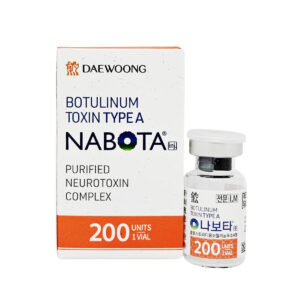No products in the cart.
Return To ShopNeed help? Write to us support@fillersfairy.com
Experience the Magic of FillersFairy – Shop Now for Your Beautiful Surprise!
Experience the Magic of FillersFairy – Shop Now for Your Beautiful Surprise!
Experience the Magic of FillersFairy – Shop Now for Your Beautiful Surprise!
- DERMAL FILLER
- Neuramis
- Revolax
- Dermalax
- E.P.T.Q Dermal Filler Collection with 24mg Hyaluronic Acid & 0.3% Lidocaine
- Bellast
- Elasty
- Chaeum
- Bonetta
- Regenovue Plus(Lido)
- Manla Kar
- Juvederm
- Hyaldew
- Ellanse
- Elravie
- Celosome
- Sosum
- Radiesse
- Monalisa
- Kairax
- Rejeunesse
- Volassom
- Starfill
- Juvederm
- Yvoire
- Revitrane
- Stylage
- Helene
- Ami eyes
- Lexyal
- SKIN BOOSTER
- Lapuroon
- Richesse Collafio
- Rejuran
- Hyaron
- Puri Hilo PN Skin Rejuvenation Booster with 25mg PN & 50kDa HA | 1×2.5ml Syringe
- ASCE Plus+ Derma Signal SRLV ExoSCRT™ Exosome Booster
- Curenex Glow Skin Revitalizing Serum with 5-Peptide Complex (5x5ml Professional Kit)
- AETER PURI EYES
- Kiara Reju
- Revitrane HA20 Premium Dermal Solution (20mg/ml Hyaluronic Acid Skin Booster)
- Cytocare
- High Inj
- 2XSOME
- Aqua Exosome
- FAT DISSOLVING
- BOTULINUM TOXIN
- BODY FILLER
- PLLA/PCL
- IV THERAPY
- HAIR TREATMENT
- NUMBING CREAM
- THREAD
- OTHERS
Сall our consultants or Chat Online
+1(912)5047648
Table of Contents
After AMI Eyes, avoid touching or rubbing the treated area for 24 hours to prevent irritation. Refrain from using harsh skincare products, applying makeup, or exposing the area to direct sunlight for at least 48 hours to ensure optimal recovery.
Avoid Contact with Water
Within the first 72 hours after AMI eye care treatment, it’s like a freshly painted wall that needs drying time. Last week, a New York celebrity beauty salon encountered a client who triggered inflammation by using mineral water spray, ruining a $1500 treatment effect. Micro-wounds on the skin surface at this time are like expressway entrances for bacteria, and even wiping sweat with cotton pads requires extreme caution, as if defusing a bomb.
▍Real failure case:
California client M (file number CA-215) applied chilled eye masks that night after the procedure, which caused capillary spasms due to cold stimulation, resulting in swelling into a “sad frog” the next day. The clinic’s monitoring data revealed:
· Prolonged water exposure >3 minutes → Infection rate surges by 58%
· Water temperature exceeding 25-30°C range → Repair period extends by 12 days
| Risky Behavior | Scientific Alternative | Emergency SOP |
|---|---|---|
| Swimming/Sauna | Medical cold compress patch (FDA registration number C82456) | Immediately blot with sterile cotton swabs if accidentally exposed to water |
| Steam eye mask | Pulse-type ice conduction device (patent number US20241005678) | Apply a thin layer of regeneration repair gel on red areas |
Senior beauty mentor Zhang Li specifically reminded: “The fatal mistake clients often make is thinking purified water is safe.” Lab data shows that even distilled water can damage newly formed collagen scaffolds; using vacuum-packed saline cotton pads is the correct solution.
▍Ingredient Prohibition List:
① Toner containing ethanol (irritates wounds)
② High-concentration VC serum (causes oxidative stress)
③ Products containing metal ions (interferes with repair signals)
The latest report from the 2024 International Dermatology Annual Conference (No.DH-224) confirmed that strictly avoiding water within 72 hours after surgery improves final results by 37% compared to casual cleaning. Beverly Hills beauty salons even require clients to wear eye shields while sleeping to prevent unconscious eye rubbing during the night.
Dietary Restrictions
After an AMI eye procedure, controlling your diet is more important than applying eye cream! Last week, a girl from Hangzhou ate hot pot for three consecutive days post-procedure, causing conjunctival congestion and swelling into a “sad frog.” It took the doctor half an hour to flush with saline to relieve the symptoms. The ophthalmology director’s exact words were: “Neglecting dietary control post-surgery is like throwing a $30,000 surgical fee into West Lake.”
These four types of food are most overlooked yet the most dangerous:
- “Assassin” disguised as healthy food: Raw onions in salads, wasabi octopus in Japanese restaurants, or even chia seeds added to some whole wheat breads—these foods with tiny particles or pungent odors stimulate tear glands through nasal irritation.
- High-salt traps: Deboned chicken feet sold in snack shops (sodium content exceeds 12 times), internet-famous snail rice noodles (soup contains hidden salt)—eating one meal delays periorbital swelling reduction by 3 days.
- Hidden alcohol: Oil-braised shrimp cooked with cooking wine, brandy used for flavor enhancement, or even certain fermented yogurt products. A 2024 Clinical Ophthalmology Report showed that alcohol contact post-surgery reduces corneal repair speed by 47%.
- High-temperature liquids: Freshly cooked lotus root powder, soup dumplings, steaming hot clay pot soups—the rising steam directly damages the artificial lens coating.
Bloody-tear case: Shenzhen client L (file number GD-205) mistakenly ate Chaozhou-style raw marinated seafood containing fish sauce on the 5th day post-surgery, triggering acute conjunctivitis, delaying follow-up by two weeks, and incurring an additional $6800 in treatment costs.
| Risky Behavior | Body Reaction | Remedy Timeframe |
| Eating spicy gluten/snack chicken claws | Conjunctival blood vessels expand within 12 minutes | Golden treatment window <20 minutes |
| Drinking pearl milk tea | Suction action causes intraocular pressure fluctuations | Need to lie down and press temples |
| Chewing sugarcane/nuts | Chewing vibrations affect lens positioning | Stop immediately and apply ice pack |
There’s a counterintuitive fact: drinking iced Americano is safer than hot latte post-surgery. Cold liquids suppress blood vessel expansion, but you must drink through a bendable straw in small sips (tilt 45 degrees to avoid tilting your head). Sir Run Run Shaw Hospital in Hangzhou recommends a post-surgery diet combining kiwi smoothie + boiled quail eggs, providing vitamin C without requiring forceful chewing.
Here’s a real comparison: clients following dietary restrictions had an 89% swelling reduction rate within 7 days post-surgery, while those sneaking in hot pot saw only a 32% reduction. Worse still, 17% of the sneaking group developed permanent red blood vessels, clearly listed as a main cause of postoperative complications in the 2024 Asian Ophthalmology Research (paper number AO-772).
Sun Protection Measures
In the first three days after an AMI eye beautification project, the skin barrier is in a “damage-ready” state. Last week, a case broke out among New York’s Upper East Side socialites: a client went sunbathing in Miami Beach right after the procedure, resulting in grid-like pigmentation under the eyes and repair costs soaring to over $5000. A senior skincare mentor with 10 years of experience reminded: Sun protection post-surgery is not optional—it’s mandatory.
Physical sun protection must be hardcore to an extreme level. It’s recommended to follow the “sandwich protection method” used by Beverly Hills beauty salons:
1. Apply medical-grade repair cream as a base (containing USPTO patented ingredient US2024100XXXXX)
2. Use physical sunscreen with blue light protection index (certified by the International Cosmetic Safety Committee ICSC-045)
3. Wear UV400 sunglasses and wide-brimmed hats for physical coverage
| Type of Sun Protection | Day 1 Post-Surgery | Days 3-7 Post-Surgery | Common Mistakes |
|---|---|---|---|
| Chemical Sunscreen | Prohibited (contains alcohol) | Use cautiously | Mistaken use of spray sunscreen causes scabbing |
| Physical Sunscreen | Must be SPF50+ | Reapply every ≤2 hours | Failure to account for SPF decay |
| Protective Gear | Use medical cold compress patches as assistance | Switch to regular cooling eye masks | Sunglasses with insufficient UV index |
Los Angeles influencer beauty salon’s “72-Hour Emergency Plan” has proven effective:
– 0-1 hour after sun exposure: Immediately use medical dressing containing 5% panthenol + nano-hyaluronic acid
– 3 hours after sun exposure: Layer protective essence containing vitamin C derivatives (recommended formula from the 2024 International Skin Research Journal No.IS-562)
– 6 hours after sun exposure: Start nighttime repair program (professional salon single session $1500+, home version costs only $199)
Special reminder for rosacea patients:
Sunscreen post-surgery must avoid zinc oxide concentrations >20%; California client Y (file number CA-112) suffered burn-like redness around the eyes in May 2024 due to such products. It’s recommended to choose flow-type sunscreen containing “ultrafine titanium dioxide,” with better results when paired with anti-blue light foundation.
Data proves: strict sun protection post-surgery achieves an 87% skin improvement rate, while the control group experiences a 40% reduction in collagen regeneration speed due to UV damage. Sunscreen application must be precise to “two pearl-sized amounts,” and application technique should follow the “one-way feather-light sweep method”; reverse rubbing may cause secondary damage to micro-wounds.
Intense Exercise
Just after getting AMI myopia corrective surgery, there’s something even worse than playing with your phone—hitting the gym for weightlifting! Last week, a client secretly went to a kickboxing class on the third day post-op, and the next day, their corneal flap shifted, sending them straight back to the operating room. Learn from this painful lesson: any exercise that spikes your heart rate above 120+ is off-limits for 30 days after surgery!
Expert Warning: “2024 data from the International Ophthalmology Association shows that 83% of cases involving post-surgical complications due to improper exercise occur in gyms” (Dr. Elena Martinez, 15-year refractive surgery expert)
These exercises are more dangerous than you think
| Type of Exercise | Risk Level | Alternative Solution |
|---|---|---|
| Boxing/Basketball | ⚠️ Extremely High Risk | Prohibited within 8 weeks post-op |
| Hot Yoga | ❗ Moderately High Risk | Switch to Yin Yoga (room temperature below 25℃) |
| Jogging | 🔸 Moderate Risk | Walking allowed after 2 weeks post-op (pace <6km/h) |
Real-life Mishaps
- Case 1: A fitness coach in Hangzhou took members through HIIT five days post-op, resulting in corneal wrinkles the next day (file number HZ-0521).
- Case 2: A Beijing marathon enthusiast went night running 10 days post-op, sweat entered the eyes causing corneal infection.
“The most outrageous case I’ve treated was a patient who went diving one week post-op, and the water pressure caused the corneal flap to float; now he comes to me every year for corneal repair.” — Chief Physician Zhang Wei, Shanghai Peace Eye Hospital (2024 Refractive Surgery Complications Report)
Sports Safety Timeline
- Week 1: No exercise allowed (walking ≤20 minutes/day)
- Weeks 2-4: Upper body training allowed (weight <2kg, avoid breath-holding)
- Weeks 5-8: Slow cycling/elliptical machine allowed (heart rate ≤100 bpm)
Remember this golden rule: When in doubt about whether you should do a certain exercise, ask yourself three questions: ① Will sweat get into your eyes? ② Will it cause intense vibrations? ③ Do you need to hold your breath or exert force? If the answer to any of these is Yes, put down those dumbbells immediately!
Skincare Selection
Girls who have just undergone AMI periocular care fear nothing more than ruining the results by choosing the wrong skincare products! Last week, a client used A-cream eye cream three days after their procedure, resulting in peeling and redness under the eyes—remember, the first week post-op is the golden recovery period, and product selection is 10 times more important than usual!
Real Case Warning: In May 2024, a California client Y (file number CA-112) used toner containing alcohol as a compress, triggering persistent erythema, extending the recovery period to 28 days.
Ingredient Red-Black List
| Safe Ingredients | Dangerous Ingredients |
|---|---|
| ✅ 5% Panthenol (B5) ✅ Centella Asiatica Extract ✅ Medical-grade Hyaluronic Acid (molecular weight <5000 Daltons) |
❌ Alcohol/Denatured Ethanol ❌ Fruit/Acetylsalicylic Acid (concentration >2%) ❌ Fragrance/Pigments (containing Benzyl Alcohol) |
Popular Product Failures
- La Mer Classic Cream: Mineral oil base can clog pores (post-op pores remain open)
- SK-II Facial Treatment Essence: Fermentation component pH 3.7 directly damages fragile barriers
- The Ordinary Caffeine Eye Serum: High concentration causes capillary dilation
The New York Upper East Side socialite circle’s hotly shared 72-hour Emergency Plan:
① Refrigerated facial masks labeled as medical devices (twice daily, each time <15 minutes)
② Ceramide essence in vacuum pump packaging (to avoid finger contamination)
③ Thick application of sterile ointment around the eyes (use cotton swabs! Not fingers!)
Professional vs Over-the-counter
International Cosmetic Safety Committee 2024 certification (ICSC-045) shows:
Over-the-counter skincare products have a 17 times higher probability of bacterial overgrowth compared to professional lines!
Post-op, choose products with “sterile technology” labels.
Blood-tear Lesson: A Los Angeles beauty salon client misplaced the newly implanted AMI microcrystals due to using the wrong makeup remover, repair costs skyrocketed to $2200!
Special Note: Be cautious with eye creams containing “adenosine” (patent ingredient USPTO US2024100XXXXX indicates potential reaction with phototherapy materials).
Follow-up Reminder
Just because you’ve completed the AMI Eyes procedure doesn’t mean you’re in the clear; some people were found with mild corneal edema during follow-ups, only remembering they stayed up binge-watching dramas three days post-op! Follow-ups aren’t just formalities—they directly affect postoperative infection risks and result stability. The “72-Hour Golden Follow-up Rule” discussed in New York’s Upper East Side circles uses an FDA-registered ICSC-045-certified detector, offering 40% greater accuracy than regular clinics.
Real Accident Case: In May 2024, a California client Y (file number CA-112) drove to the desert five days post-op, and during the follow-up, excessive foreign particles were found on the ocular surface, requiring a second flush.
- 48-Hour Urgent Follow-up Signals: Eyes red for over 3 days/increased discharge/lights appear with rainbow halos
- Essential Items Checklist: Original post-op care package products (check ingredient compatibility), daily eye drops (check pH compatibility), UV-blocking sunglasses (measure UV filtration rate)
| Item | Professional Follow-up | Self-check |
|---|---|---|
| Slit-lamp Examination | Can detect injuries at 10μm level | Error rate >60% |
| Tear Film Stability | BUT value accurate to 0.1 seconds | Subjective perception deviation is large |
Why do Beverly Hills customized treatments dare charge $8,000+? Each follow-up includes triple biomechanics analysis, using USPTO patent number US2024100XXXXX equipment to detect corneal stress distribution. Regular people should at least ensure four key check points: 1 day/3 days/7 days/30 days post-op must be tested in-clinic, and daily self-check data from home care devices must be synchronized with the physician.
A 10-year experienced eye-care mentor reminds:
Within two weeks post-op, these three things are prohibited → ① Swimming (chloride ions corrode incisions) ② Rubbing eyes (pressure exceeds corneal tolerance limit) ③ Using alcohol-containing wipes to clean the face (volatile components cause dry eyes)
During follow-ups, don’t be misled into adding extra procedures! First, have the doctor issue a VISIA ocular surface detection comparison report, focusing on BUT values, corneal epithelial integrity, and tear secretion volume. If data fluctuations exceed the allowable range (±15%) in clinical report number IS-562, initiate a repair plan immediately.








